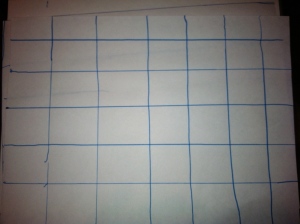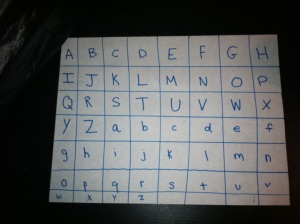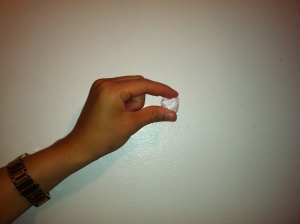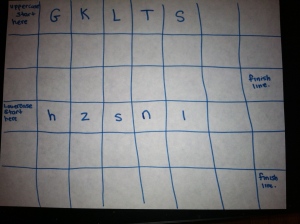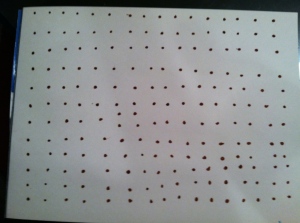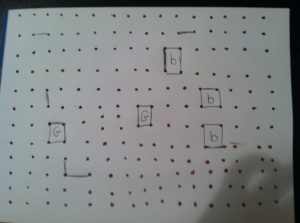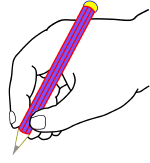Handwriting Games
Sometimes getting your child to write can be challenging. Here are some fun games to help make sure your child is forming all his or her letters correctly.
Handwriting Game #1
You will need: paper, pen, ruler, cup
Step 1: Draw boxes on a piece of paper. (Your or your child can do this with a ruler)
Step 2: Write all the letters of the alphabet inside the boxes. Both uppercase and lowercase letters.
Step 3: Have your child cut out the boxes. Make sure they hold the scissor correctly.
Step 4: Have your child crumble all the pieces into little balls and place them into a cup.
Step 5: Take another piece of paper and draw boxes again. In the first box write the words ‘Uppercase Letters’ and in the 4rd box going down write the words ‘Lowercase Letters’.
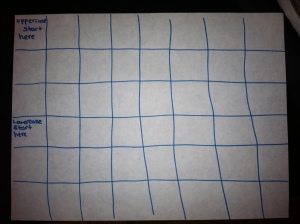
This is the the last step before starting the game
Step 6: Ask your child if they wanna be on Team Uppercase or Team Lowercase.
Step: 7: Tell your child this is a race to see whose team can fill up their boxes first. Take turns pulling out letters from the cup. If you get an uppercase letter you write it in the uppercase boxes and if you get a lowercase letter you write it in the lowercase boxes. Whichever teams boxes fills up first will win!
Note: If you get a letter that is not on your team you can still write it in the box. For example, if you are on team lowercase and get an uppercase A you still write the uppercase A in the uppercase boxes.
Handwriting Game #2
Materials Needed: Marker, Pencil and Paper
Directions:
1. Either you or your child will use a marker to make rows of dots on white paper.
2.Choose a letter that your child needs practice forming. Then have your child pick the letter that you will be writing.
3. Each player takes a turn connecting 2 adjacent dots. If you form a box during your turn you then write the letter you have chosen in that box.
4. When all the boxes are filled up have your child count to see how many are filled with his or her letter. The person with the most is the winner!
Note: Throughout this activity make sure each player is using the following grasp when using the pencil and marker:
For more on how to form letters correctly see the Handwriting Without Tears program frequently used by schools and Occupational Therapists.
